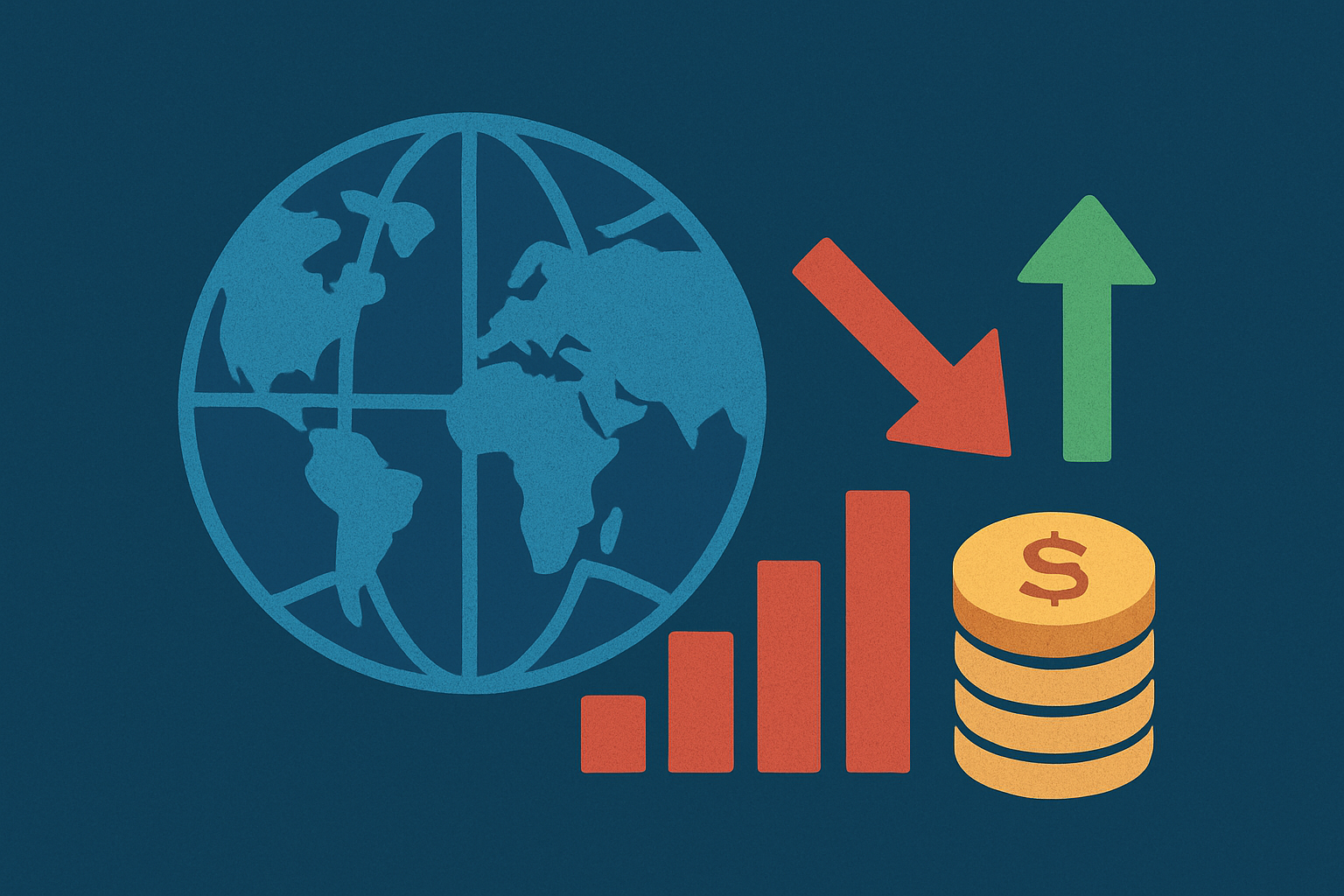The world economy in late 2025 is best described as walking a tightrope. After several turbulent years defined by the pandemic, energy price shocks, and a wave of central bank tightening, global growth has slowed but not collapsed. Policymakers, investors, and households alike are cautiously navigating an environment where inflation is cooling but remains above target, and growth is steady but fragile.
Growth: Stable, but Uneven
According to the World Bank, global GDP growth is expected to hover around 2.3% this year. This represents a slowdown compared to the strong post-pandemic rebound but is nonetheless positive given the headwinds. Advanced economies such as the United States and the euro area are expected to see modest growth, while emerging markets—particularly in Asia—remain the main engines of expansion.
China continues to play a pivotal role, though its growth is more subdued compared to the double-digit rates of the past. Structural challenges, including demographic shifts, high debt levels, and trade frictions, limit its momentum. India, on the other hand, is accelerating, buoyed by strong domestic demand and an expanding services sector.
Inflation: Falling, but Still Stubborn
One of the defining challenges of the past few years has been inflation. As supply chains normalize and energy prices stabilize, global inflation has eased significantly. Yet in many economies, core inflation—excluding volatile items like food and energy—remains above central bank targets.
In the United States, the Federal Reserve has managed to bring inflation down from multi-decade highs, though wage pressures continue to complicate the picture. In Europe, energy dependence and geopolitical uncertainties still feed into inflation dynamics. For emerging markets, the story is mixed: some have succeeded in curbing inflation, while others still grapple with currency weakness and food price volatility.
Central Banks: Shifting Gears
After an intense period of interest rate hikes, central banks are beginning to pivot. The U.S. Federal Reserve and the European Central Bank have signaled that rates may remain high for longer, but the pace of tightening has slowed. Some smaller economies, facing weaker growth, have already begun cutting rates cautiously.
This policy divergence reflects the complexity of the current environment: too much easing risks reigniting inflation, while excessive tightening could tip economies into recession. Striking the right balance is proving difficult, especially given geopolitical uncertainties.
Risks on the Horizon
The outlook is clouded by several risks. Trade tensions continue to simmer, with protectionist measures and supply chain “de-risking” reshaping global commerce. Energy markets remain vulnerable to geopolitical shocks, particularly in the Middle East and Eastern Europe. Financial vulnerabilities, including high levels of corporate and sovereign debt, could also resurface if global financing conditions tighten again.
Climate-related risks are becoming increasingly visible as well. Extreme weather events not only strain infrastructure but also add volatility to food and energy markets. For many developing economies, the costs of adaptation and transition remain daunting.
A Narrow Path Forward
In short, the global economy in 2025 is neither booming nor busting—it is balancing. Growth continues, but at a subdued pace; inflation is falling, but not yet tamed; and central banks are cautiously recalibrating policy. The coming year will test whether the global economy can manage a “soft landing,” avoiding both renewed inflationary spirals and a hard recession.
For businesses and investors, the message is clear: volatility is likely to remain, but so too are opportunities. Markets that can adapt to shifting supply chains, leverage technological innovation, and navigate geopolitical risks may find themselves well-positioned in an otherwise uncertain global landscape.





